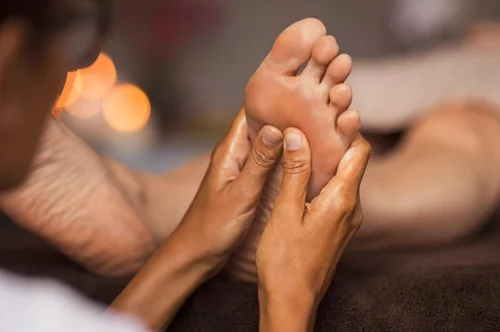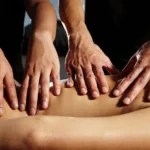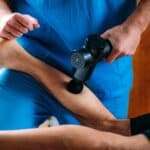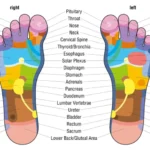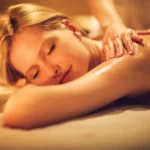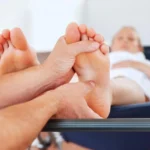How to massage feet and legs is a skill anyone can learn—and it can do wonders for your overall wellbeing. Whether you’re easing soreness after a long day, relieving tension from tired muscles, or simply craving a moment of relaxation, massaging your feet and legs helps boost circulation, reduce stress, and promote healing.
In this article, we’ll show you how to massage feet and legs using simple, effective techniques you can do at home. You’ll learn about the key benefits, step-by-step methods, and how to tailor your massage to your specific needs for maximum relief and relaxation.
Table of Contents
Preparation for a Foot and Leg Massage
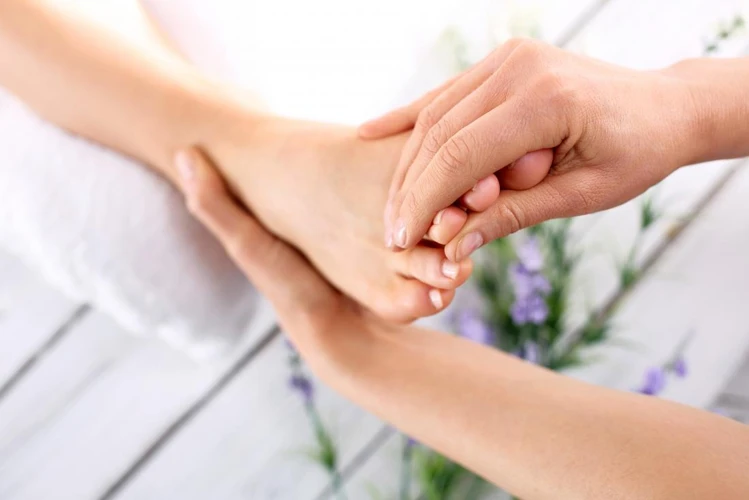
Before you begin, it’s important to set up your space and gather your supplies to ensure a relaxing and effective massage.
Supplies
Massage oil or lotion is essential.
- Massage oil helps your hands glide smoothly over the skin.
- Lotion adds a moisturizing benefit and works well for those who prefer a lighter texture.
Choose a product with soothing ingredients like lavender, peppermint, or eucalyptus for added relaxation.
🛏️ Space
Clear an area large enough for the person receiving the massage to lie down comfortably on their back. You can use a massage table, a yoga mat, or even a cushioned rug with a towel.
👣 How to Massage Feet and Legs
Here’s a simple step-by-step routine to help you deliver a deeply relaxing and therapeutic massage.
Step 1: Warm-Up
Begin with gentle stroking motions on the feet and legs to warm up the muscles. Use light, circular movements with both hands.
Step 2: Kneading the Muscles
- Gently knead the soles of the feet with your thumbs.
- Move up to the ankles and lower legs using small circular motions.
- As you reach the calves and thighs, apply slightly more pressure if comfortable.
- Focus on one leg at a time, making sure to work evenly on both sides.
Step 3: Finishing Strokes
End with long, gliding strokes along the full length of the leg, from the toes up to the thigh. This helps encourage circulation and signals the body to relax.
Massaging the Feet: Techniques and Tips

💆 Techniques
- Start by gently rubbing the top and bottom of the foot in slow circles.
- Use your thumbs to apply pressure to the arch and ball of the foot.
- Knead the heel and sides of the foot.
- Finish with sweeping strokes from the toes toward the ankles.
🎯 Pressure
Adjust your pressure based on how the person responds:
- Too light? It may tickle or feel ineffective.
- Too firm? It can cause discomfort.
Use your intuition and check in with the receiver as you go.
⏱️ Duration
A 10 to 20-minute foot massage is ideal. This gives enough time to address tension while helping the recipient fully relax without overstimulation.
Massaging the Legs
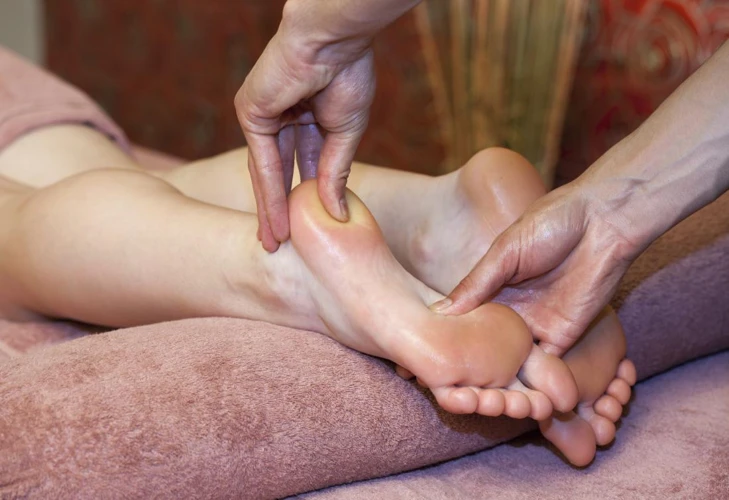
Massaging the legs can help relieve muscle tension, improve circulation, and promote deep relaxation. Here’s how to do it effectively using a few foundational techniques.
💆♂️ Techniques
You can use a combination of massage techniques to relax the leg muscles:
- Stroking (Effleurage): Use gentle, gliding motions with your open hands. This helps warm up the muscles and spread the massage oil evenly.
- Kneading (Petrissage): Use your fingers and thumbs to gently lift, roll, and squeeze the muscles in circular motions. Great for working deeper into the tissue.
- Friction: Apply deeper, targeted pressure with your fingertips or palms, using small, back-and-forth movements. Ideal for breaking up tight knots or areas of tension.
Use each technique slowly and mindfully, allowing time for the muscles to respond.
🎯 Pressure
The right pressure is key to an effective massage:
- Start light, especially for sensitive areas like the thighs and behind the knees.
- Adjust pressure based on feedback from the person receiving the massage.
- Apply deeper pressure only when they feel relaxed and receptive—never force it.
⚠️ If they express any discomfort or pain, reduce the pressure immediately.
⏱️ Duration
The length of the leg massage depends on the individual’s needs:
- For general relaxation: 5–10 minutes per leg
- For targeted relief (e.g. sore calves or thighs): up to 15 minutes
Always check in with the person throughout the massage and adjust the pace or technique as needed. The goal is to leave them feeling relaxed—not sore.
Combining Foot and Leg Massage

A foot and leg massage can be incredibly soothing when both areas are treated in a flowing, unified routine. By combining techniques and adjusting your approach to the individual’s comfort level, you can deliver a balanced and therapeutic experience.
💆 Techniques
Use a blend of kneading and stroking to release muscle tension and stimulate circulation:
- Kneading: Apply gentle pressure using your thumbs and fingers to work into the deeper layers of the muscles in the feet, calves, and thighs. This helps ease knots and built-up tension.
- Stroking: Use smooth, gliding motions along the skin to promote relaxation and improve blood flow. Stroking also acts as a calming way to transition between muscle groups.
Alternate between these techniques to create a rhythm that’s both relaxing and effective.
🎯 Pressure
Feet and legs tend to be more sensitive than other parts of the body, so pressure should be adjusted accordingly:
- Begin with light pressure, especially on bony or tender areas.
- Gradually increase to moderate pressure on muscle-dense areas like the calves and thighs, only if the person is comfortable.
- Avoid applying deep pressure on veins or directly over joints.
Always ask for feedback and make adjustments as needed.
⏱️ Duration
A combined foot and leg massage should ideally last no more than 10 minutes per session:
- Too much time can lead to muscle fatigue or overstimulation, especially in sensitive areas.
- For best results, consider short, focused sessions repeated throughout the day or week, especially for those who stand, walk, or exercise often.
🕐 Try alternating days or combining shorter sessions with other self-care practices like stretching or a warm foot soak.
How to Massage Feet and Legs Aftercare
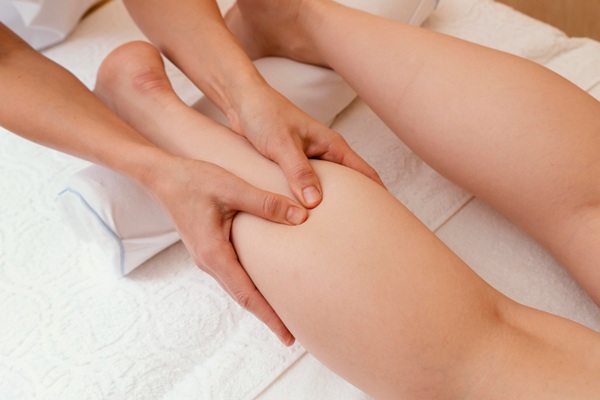
| Action | Explanation |
|---|---|
| Cover the feet with a blanket | This helps to keep the body temperature and prevent chills. |
| Drink plenty of water | This helps replenish fluids lost through sweating. |
| Avoid strenuous activities | This helps to avoid over-exerting the muscles after being massaged. |
| Avoid alcohol and caffeine | This helps to prevent dehydration and headaches. |
Rest is important after a foot and leg massage. Give yourself at least 30 minutes to relax and enjoy the benefits of the massage. During this time, avoid using electronic devices and instead focus on deep breathing. This will help to further relax the muscles and reduce stress.
Safety Considerations
- Be gentle: Always apply gentle pressure during a massage. Too much pressure can lead to pain and discomfort.
- Know your limits: Be aware of your own limitations and the limitations of the person receiving the massage. If the recipient is uncomfortable, stop.
- Be aware of allergies: If you are using oils or lotions, make sure the recipient does not have any allergies to them.
- Wash your hands: Before and after the massage, it is essential to wash your hands. This is especially important if you are using oils or lotions.
- Be aware of medical conditions: If the recipient has medical conditions such as diabetes, be aware of any special considerations. It may be necessary to consult with a doctor before performing the massage.
- Be aware of skin conditions: If the person receiving the massage has any skin conditions, make sure to be aware of them and take appropriate precautions.
Frequently Asked Questions
What are the Benefits of Foot and Leg Massage?
- Relieves Stress: Foot and leg massage can help reduce tension and stress levels as it stimulates the release of endorphins, the body’s natural mood-lifting hormones.
- Improves Circulation: Foot and leg massage can help improve circulation by stimulating the flow of blood, lymph and oxygen throughout the body.
- Eases Aches and Pains: By increasing circulation, massage can help relieve tension and reduce pain in the feet, ankles and calves.
- Promotes Relaxation: Massage can help relax the entire body, releasing tight muscles and encouraging a sense of calm and wellbeing.
- Improves Mobility: Massage can help improve flexibility and range of motion in the feet and legs, making it easier to move around.
What are the risks associated with foot and leg massage?
1. Injury: Massaging the feet and legs can cause pain, discomfort, swelling, and even injury to the skin, joints, and muscles. If done incorrectly, a foot or leg massage can cause serious injury to the muscles and tendons, such as sprains, strains, and tears.
2. Infection: Improper sterilization of the massage equipment and unclean hands can cause infection. If a massage therapist uses unclean instruments or does not use disposable gloves, there is a risk of spreading infection.
3. Allergic reactions: Some people may be allergic to ingredients in massage oils, lotions, and other products used during the massage. Allergic reactions can cause skin irritation and rashes.
4. Blood clots: Massaging the feet and legs can cause the formation of blood clots. If a massage therapist applies too much pressure, this can cause the formation of clots and increase the risk of deep vein thrombosis.
5. Nerve damage: If a massage therapist applies too much pressure, it can cause nerve damage, leading to numbness and tingling in the feet and legs.
What Type of Oil or Lotion is Best to Use During a Foot and Leg Massage?
Using oil or lotion during a foot and leg massage can help reduce friction and improve the massage experience. Many types of oil or lotion can be used, including light massage oil, coconut oil, vitamin E oil, and unscented body lotion. When using oil, start with a small amount, and add more as needed. When using lotion, use a generous amount to ensure the massage is comfortable for the recipient.
How Often Should Someone Receive a Foot and Leg Massage?
The frequency of foot and leg massages depends on an individual’s needs. Generally, a massage once a month is recommended for relaxation, while a massage once or twice a week can help reduce chronic pain and tension. If someone has an injury, more frequent massage sessions may be necessary for proper healing and rehabilitation.
Is it Possible to Massage Feet and Legs Without a Partner?
Yes, it is possible to massage feet and legs without a partner. Self-massage techniques can be used to provide relaxation, relief, and improved circulation to the feet and legs. Some simple techniques include using your hands, a tennis ball, or a foam roller to massage your feet and legs. Additionally, stretching and foam rolling can help improve flexibility and reduce pain and soreness.
Conclusion
A foot and leg massage doesn’t require professional training—just a little time, intention, and the right technique. With regular practice, you can relieve stress, ease muscle tension, and support healthy circulation right from the comfort of home. Whether you’re winding down after a long day or giving your body some well-deserved care, learning how to massage feet and legs is a simple yet powerful way to improve your overall well-being.
💡 Want to explore more? Check out our guides on How to Give a Good Foot Massage and The Best Oils for Massage.
📚 References
- Healthline – 14 Leg Massage Ideas
- White House Office of Science and Technology Policy: Massage Therapy Fact Sheet
- National Institutes of Health: Massage Therapy: An Evidence-Based Approach to Pain Management
⚠️ Disclaimer:
This article is for informational purposes only and does not constitute medical advice. Always consult with a licensed healthcare provider or certified massage therapist before beginning any new treatment, especially if you have pre-existing health conditions or concerns

